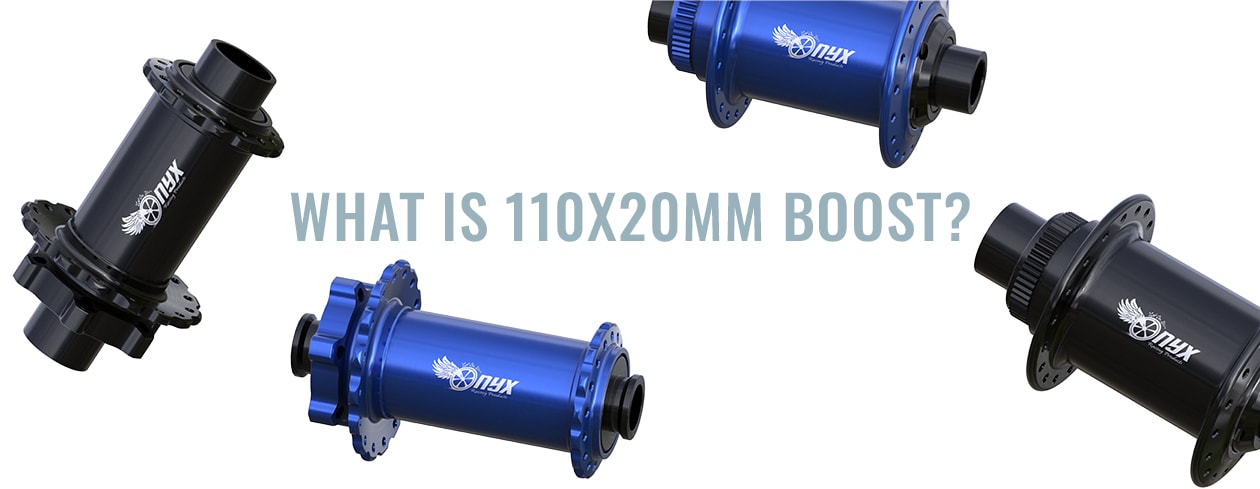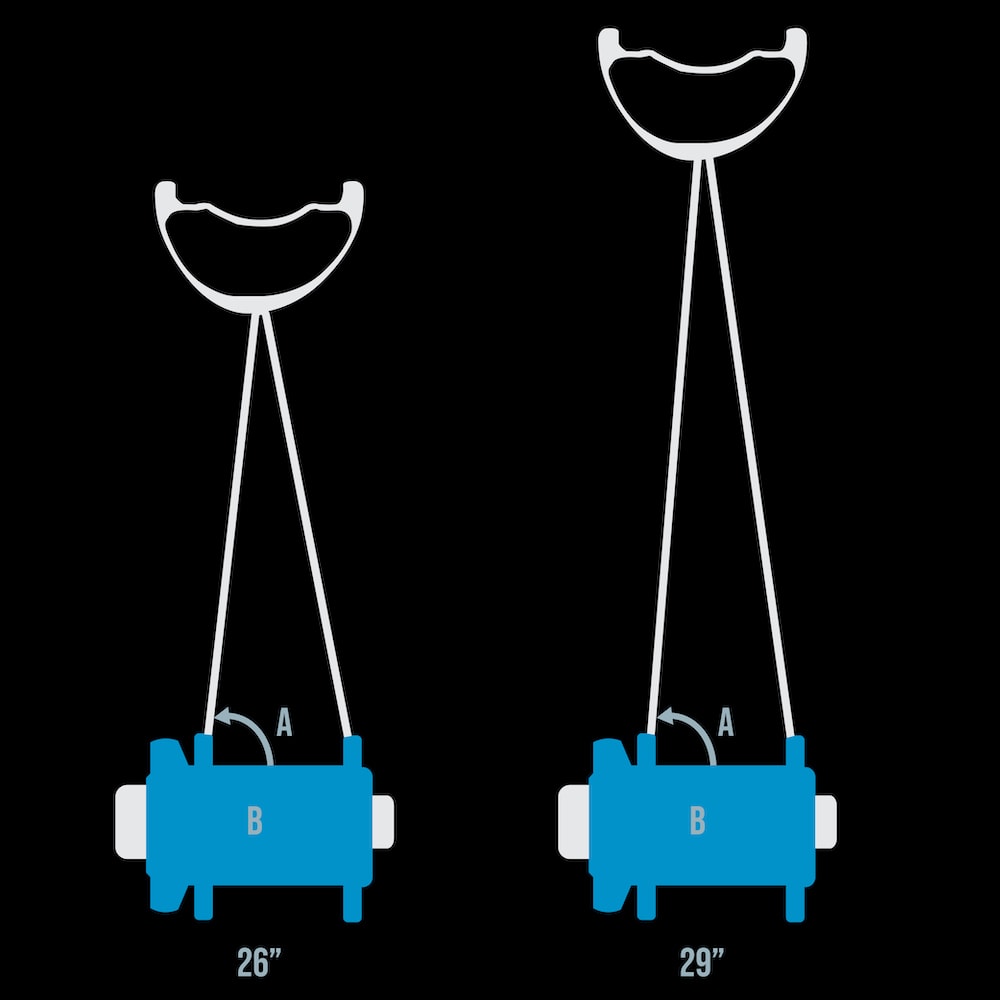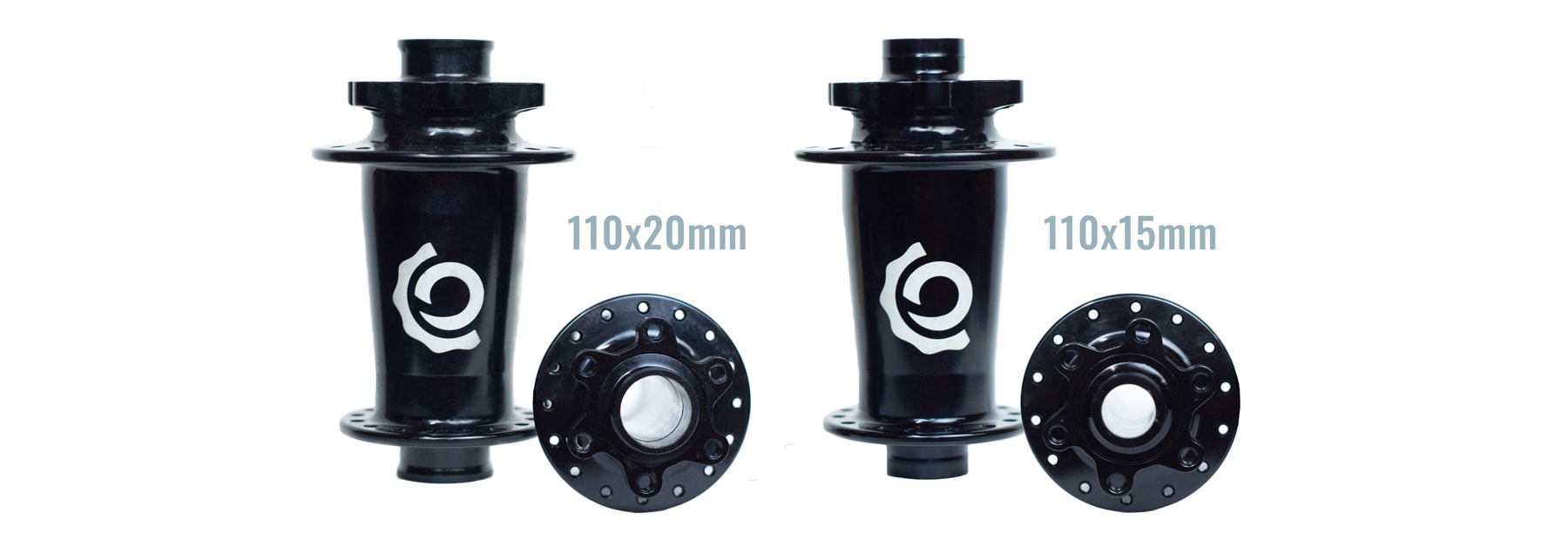
Why do we need the 110x2omm hub standard?
Developed to solve lateral wheel flex in larger-diameter downhill rigs, the 110x20mm boost hub standard is the result of the DH market innovating to meet the needs of riders as cutting-edge developments in bike design were made in adjacent parts of the industry. How and why downhill bike evolution got to this place is both fun and important in understanding why this hub standard came to be and why it’s sticking around (for now…).
Historically, downhill bikes used exclusively 26″ wheels as they are strong, light and agile and, most importantly, laterally stiff. Even when 29″ wheels showed up on the XC and trail scene in the late 2000’s, DH bikes stayed the course with their small and stout 26″ hoops. Larger wheels were tested, but bike technology and geometry at the time just wasn’t ready to handle the demands of DH riding. With 29″ wheels, downhill bikes were slow and awkward on the track and were therefore quickly dismissed.
Soon 27.5” wheels came to prominence as mountain bike geometries continued evolving. Bikes became increasingly longer and slacker, with longer wheelbases eventually optimized for 29” wheels. To increase steering precision and wheel stiffness on this larger wheel platform, 110x15mm boost front and 148x12mm boost rear hubs were developed, increasing hub width by 10mm in the front and 8mm in the rear compared to previous hub standards. This was essential, as decreasing the bracing angle of spokes with wider hub flanges allowed a stiff and stable 29” wheel. Boost hubs soon became industry standard and are the axle spacing standard for almost all mountain bikes manufactured post-2016.

Spoke Bracing Angle vs Wheel Size
When comparing spole bracing angle (A) relative to the hub on a 26″ wheel vs a 29″ wheel, the angle is greater on the 29″ wheel. This means less lateral support for the 29″ wheel when compared to the 26″ wheel.
One way to decrease the bracing angle (A) and reclaim the lateral stiffness is to increase the hub flange width (B). This is what Boost 110×20 aims to achieve.
The “Boost Revolution” hits the DH market
With the success of 29” trail and enduro rigs, 29” DH bikes were back on the table and several manufacturers began to shift their focus towards developing bikes in this spec. This of course happened in tandem with boost hubs and their delivery of strong and successful 29” DH wheels, so the progression seemed obvious. Taking the original 110x20mm front hubs that were standard for DH rims because of their robust and stiff axle diameter and combining them with the new “boost” hub width revolution and – BAM!- 110x20mm boost hubs were born!

What does the 110×20 Boost difference mean for you and your bike?
Boost hubs widen hub flanges by 5mm, and though this sounds marginal the effect on the bracing angle of the spokes with a large, 29” wheel is actually very significant. The result of this flange width increase means that the brake rotor mount is also shifted 5mm out towards the fork leg and also meant that old, 110×20 boost forks would soon be outdated.
Though non-boost DH wheels are able to be converted to fit DH boost forks with a shim installed behind the rotor, after-market conversions are not as bombproof as DH boost hubs designed for perfect compatibility with these new forks. With the increase in front-suspension manufacturers who have brought 110x20mm boost DH forks – Fox, RockShox, DVO and Ohlins to name the most popular- going full 110×20 DH boost with front wheels is now the obvious choice for riders.